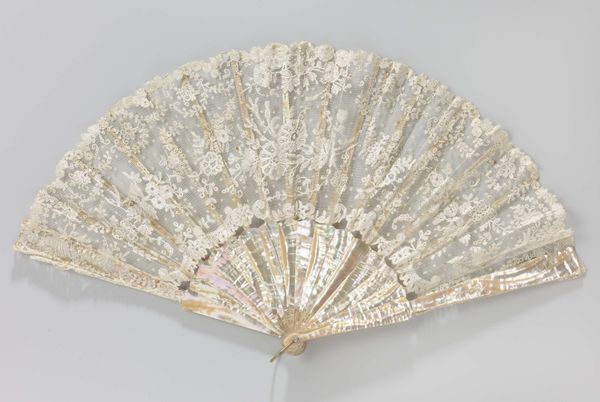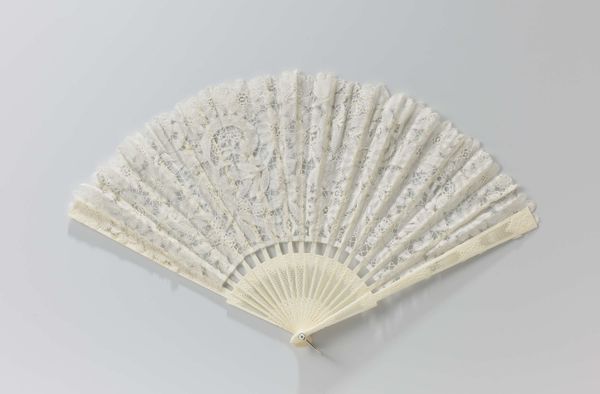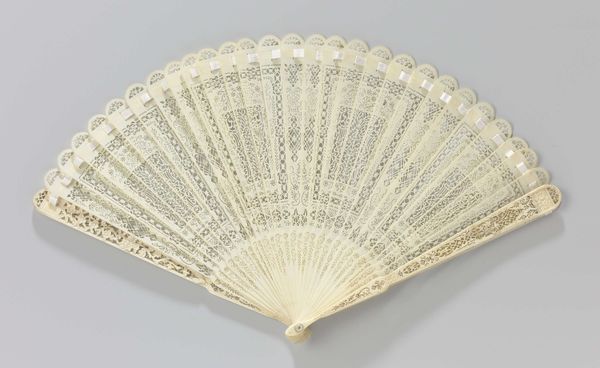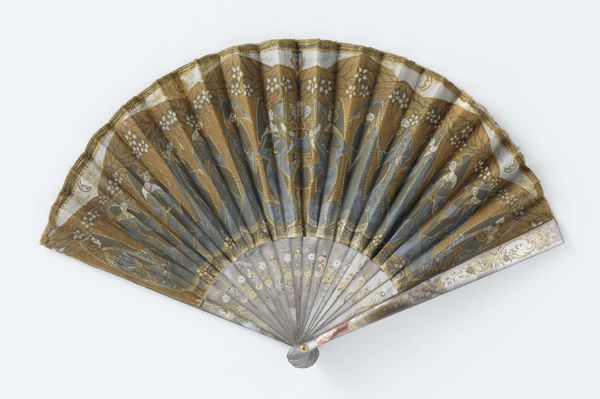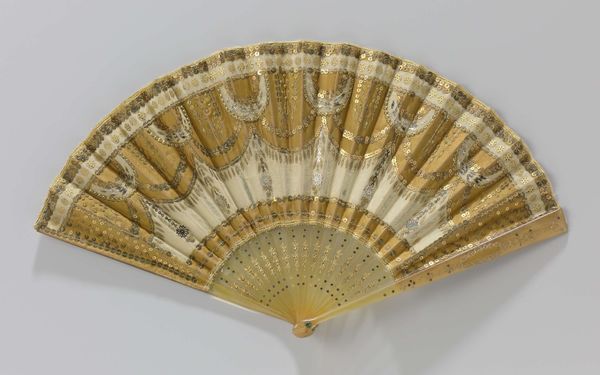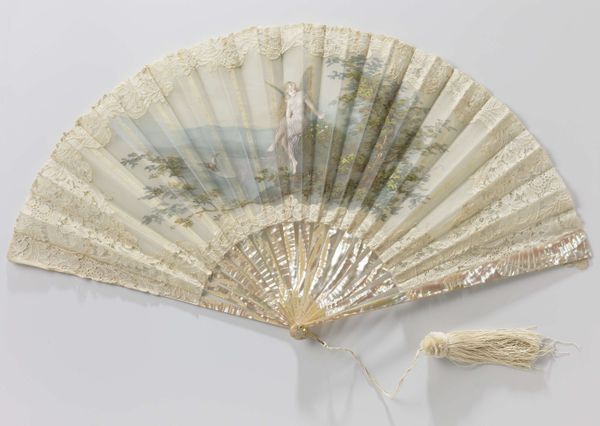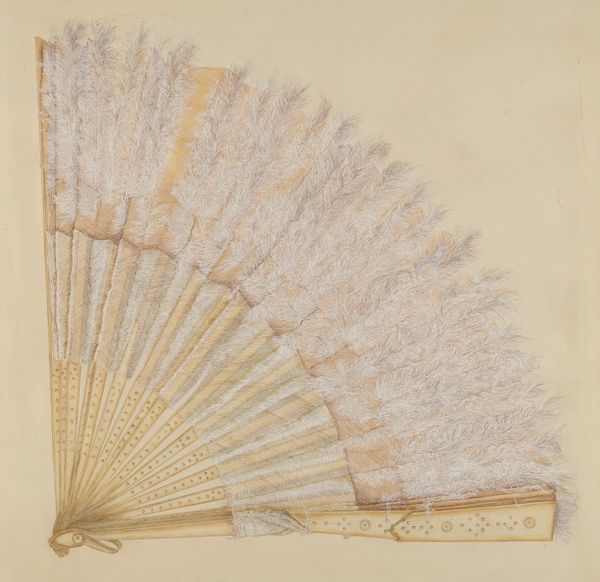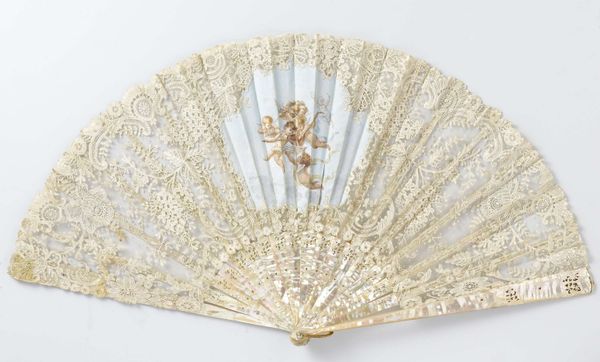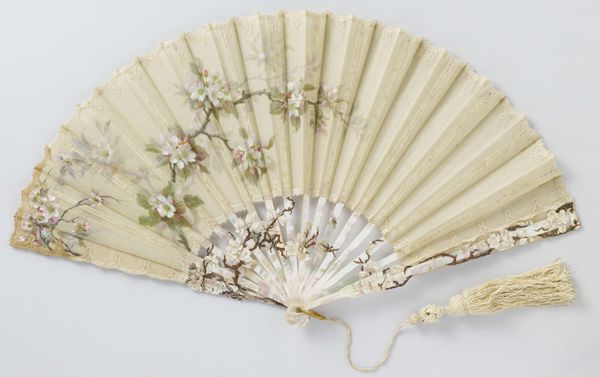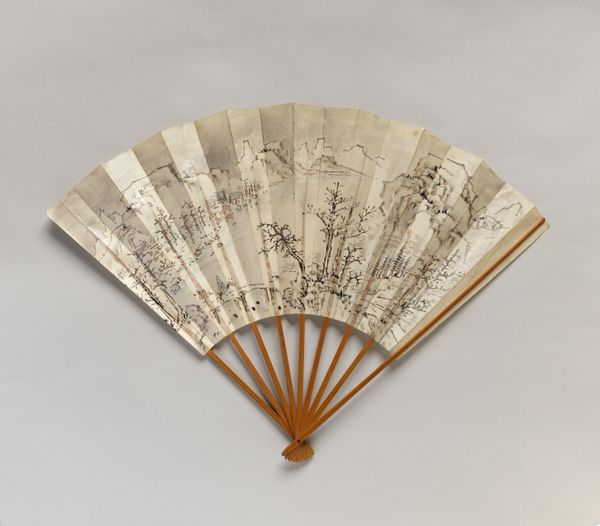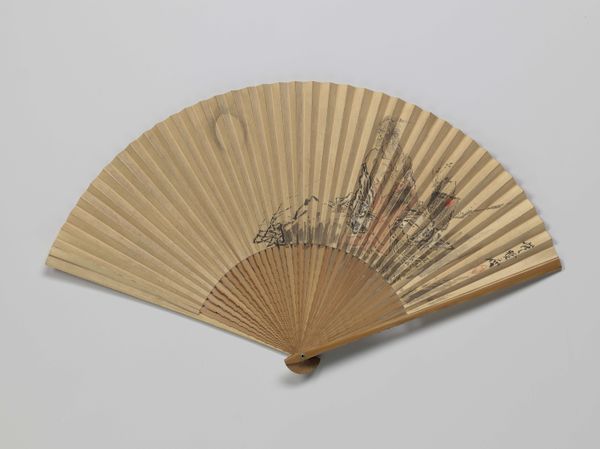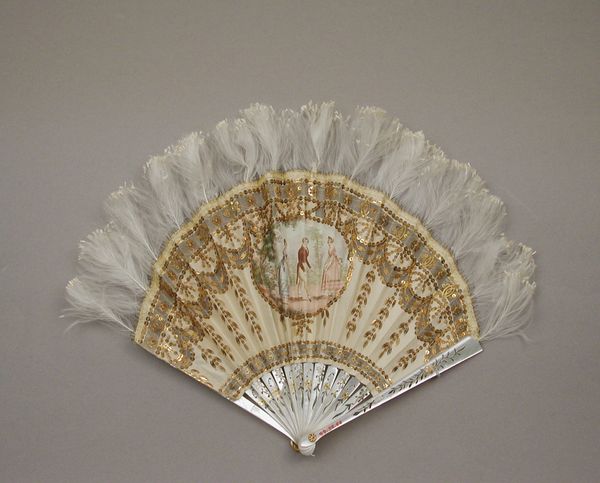
Vouwwaaier met blad van Brussels naaldkant op een montuur van parelmoer voorzien van 'métal en quatre couleurs' c. 1865 - 1875
0:00
0:00
fibre-art, weaving, textile
#
fibre-art
#
weaving
#
textile
#
organic pattern
#
decorative-art
Dimensions: span 33 cm, length 32.8 cm
Copyright: Rijks Museum: Open Domain
Editor: This folding fan, dating from around 1865 to 1875, features Brussels needlepoint lace on a mother-of-pearl frame, embellished with 'metal and quatre couleurs'. It’s so delicate. What statements could an artwork like this make about labor and the art market at that time? Curator: Think about it: the production of Brussels needlepoint lace involved highly skilled labor, often women, working in specific social and economic conditions. This fan represents not just decoration but a complex web of materiality. Who had access to this level of artistry, and what did that say about wealth and power? Editor: I hadn’t considered that! So, the fan’s materials, the lace and the mother-of-pearl, become signifiers of luxury achievable through extensive labor and resource extraction? Curator: Exactly. How do we view 'fibre-art' or 'textiles' against, say, painting or sculpture, at the time this object was created? Were women adequately credited for their contributions in applied art? And, crucially, who gets to define ‘art’ in the first place? Editor: It challenges this supposed hierarchy of artistic mediums and forces us to confront the social status tied to craftsmanship. And I’m curious… what's the significance of its "organic pattern”? Curator: Does this gesture, or visual marker, attempt to reconcile or to contrast natural and man-made entities? And at whose expense? As it disguises what were probably inhumane production realities? These decorative arts became increasingly fetishized because of mass production that rendered them seemingly more bespoke. Editor: It makes you rethink how we value and classify different forms of making and consider the historical inequalities inherent in those classifications. Thank you! Curator: Precisely. The fan opens a discussion about value, labour, and consumption far beyond its delicate surface. It shows you a new understanding of art.
Comments
No comments
Be the first to comment and join the conversation on the ultimate creative platform.
